- Register
- Log in to Tune-In
- Wishlist (0)
-
Shopping cart
(0)
You have no items in your shopping cart.
Beatles News
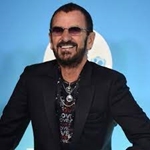
The music icon played in the legendary band alongside John Lennon, Sir Paul McCartney and George Harrison, and he's confessed to loving the time around their 1968 album, which was officially titled 'The Beatles'.
Speaking as he celebrated his 81st birthday in Beverly Hills Park on Wednesday (07.07.21), he explained to TMZ: "I've loved the 'White Album' all of my life because we were back being a band."
The 'White Album' is widely considered to be one of the best records of all time, and it was recorded at EMI Studios in London.
Tensions within the group escalated after the album's release and they eventually announced their split in 1970.
Reflecting on his time in the band, Ringo jokingly added: "We made a couple of other good albums too!"
The drummer previously revealed he wanted fans to "spread peace and love" to celebrate his 81st birthday.
Source: BANG Showbiz/uk.news.yahoo.com
details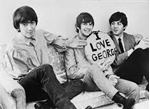
George Harrison had the honor of giving an acceptance speech when The Beatles were inducted into the Rock & Roll Hall of Fame. However, he revealed it was “hard” for him to represent The Beatles at that time. Here’s what he had to say about John Lennon and Paul McCartney in his speech.The Beatles’ Rock & Roll Hall of Fame induction was notable both for who was there and for who was not there. George, Ringo Starr, Yoko Ono, and John Lennon’s sons, Julian and Sean, were present for the ceremony. Mick Jagger inducted the band with his trademark wit. However, John was not there because he had died, and Rolling Stone reports Paul McCartney wasn’t there because his relationships with Ringo, George and Yoko were strained over a royalty dispute.
Source: cheatsheet.com
details
SIR RINGO STARR's birthday has been celebrated by Sir Paul McCartney and the estates of the late members of The Beatles, John Lennon and George Harrison.
Ringo Starr discusses his ‘peace and love’ catchphrase in March
Yesterday marked Sir Ringo Starr’s 81st birthday and fans have been celebrating around the world. As is his tradition, The Beatles drummer asked everyone to say “Peace and Love!” at noon on July 7. Sir Ringo posted the moment he did this himself with his wife Barbara Bach in Beverly Hills, Los Angeles.
Source: George Simpson/express.co.uk
details
THE BEATLES split up in 1970 bringing an end to the greatest band of all time - but John Lennon was worried about his friend and bandmate Ringo Starr once everyone started working on solo projects.
The Beatles made the decision to bring the band to an end in 1970 after releasing 12 studio albums and touring the world. Shortly thereafter each member of the band started working on their own albums. John Lennon began releasing music with the Plastic Ono Band, Paul McCartney released his solo album McCartney and George Harrison had begun work on All Things Must Pass. Ringo Starr had yet to find any real commercial success and Lennon was keen to make sure he wasn't going to be a failure.
Source: Callum Crumlish/express.co.uk
details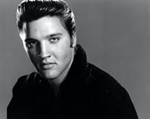
During an interview, The Beatles’ Ringo Starr once gave fans a list of his favorite songs. He said it was hard to narrow his favorite tracks to just a few. Interestingly, he pointed to one of Elvis Presley’s early songs as one of his favorites. Here’s why he enjoyed the song so much.
“I love music,” Ringo told ABC News in 2009. “You know, people say, ‘Your top 10.’ I don’t have a top 10, I have a top thousand or 2,000. Music has meant a lot, you know.” Ringo settled to list the songs that sounded best to him at that point.
He chose a handful of classic tracks by artists who became famous in the 1950s and 1960s and one song by a contemporary artist. He pointed to Little Richard’s “Good Golly Miss Molly,” Bob Dylan’s “When the Deal Goes Down,” and The Beatles’ “Rain” as favorites, while praising Taylor Swift’s “You Belong With Me.” He also praised the Black Eyed Peas without saying which of their songs he enjoyed. Ringo mentioned an Elvis song as well: “Don’t Be Cruel.”
Source: cheatsheet.com
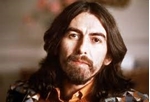
Former Beatle George Harrison was nearly killed in 1999 when a man entered the home he shared with his wife Olivia and their son Dhani. He found Harrison and, seemingly intent on killing him, stabbed him multiple times.
While the “Got My Mind Set On You” singer survived the ambush and even joked about it, a member of his staff revealed that he was never the same after that.
The events of the night of Dec. 30, 1999 came to light during the trial of the man who attacked the musician in his home.
Harrison told the court that the evening began with his having locked up the estate for the night and joining his wife in bed at around 2 a.m. About an hour later, his wife Olivia heard what sounded like glass breaking. She thought in her grogginess that perhaps a chandelier had fallen, but realized soon enough that someone had broken into their home.
The “Blow Away” singer stated that he went to investigate the noise, while his wife called the police. He spotted the intruder, whose name he later learned was Michael Abram. Harrison’s attempts to reason with Abram were fruitless, as the man had begun screaming at the former Beatles guitarist.
Source: cheatsheet.com
details
Liverpool West Productions today announced the digital release of The Beatles and Us, an award-winning documentary portrait of Liverpool and The Beatles. The film goes into depth about The Beatles hometown of Liverpool, exploring their evolving relationship and mutual impact. The Beatles and Us is available for digital download, rental, and streaming now.A beautifully shot short film, The Beatles and Us details the influential character and traditions of the city on the Beatle's personalities and creative drive. The film looks intimately and affectionately at the cities culture, history, and people. Selected as the best international documentary at the Venice Shorts film festival, The Beatles and Us has received international acclaim across the festival circuit. Selected by Amsterdam World International and Crystal Palace International, the film was also chosen as a finalist at the New York International Film Awards.
Source: Liverpool West Productions/prnewswire.com
details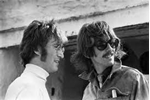
The Beatles are one of the most successful, beloved rock bands in music history. But their time together was far from perfect. The Beatles’ story includes a ton of behind the scenes drama both with other popular bands at the time — such as the Rolling Stones — and within the Fab Four itself. Even years later, former Beatle George Harrison called out a “difficult” movie director for reminding him of former bandmate John Lennon.After the band’s break-up in 1970, the Beatles — Harrison, Lennon, Paul McCartney, and Ringo Starr — also eventually pursued solo careers. Lennon and McCartney had the greatest success with their subsequent work. But Harrison landed a number of hits as well, including “My Sweet Lord” and “Got My Mind Set on You.”
Source: cheatsheet.com
details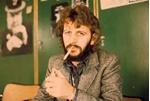
Ringo Starr did much of his most famous work with The Beatles, however, he’s still making music to this day. During an interview promoting one of his newer projects, Ringo discussed his feelings on two major pop stars: Billie Eilish and Miley Cyrus. Here’s what he thinks of the two stars — and a look at their connections to The Beatles.
Esquire’s Alan Light asked Ringo what he thought of new stars. “I love Billie Eilish!” he exclaimed. “We have her brother [Finneas] on ’Here’s to the Nights.’ But I’m not following them now like when it was, ‘Oh, Ray Charles, I’ll go anywhere to buy a record.’ It’s not like I buy their records, I may buy a track on iTunes—I go to iTunes, it’s the only way I know!”
According to NME, he enjoyed being at the Grammys with Eilish. “It was a great pleasure for me to do the Grammys on Sunday and presenting the Best Record to Billie Eilish who I think is just incredible,” he said. He went on to say her admired her as a person and he admired her as a human being.
Source: cheatsheet.com

After The Beatles split up in 1970 there was a lot of disagreement and bad blood between them. Paul McCartney and John Lennon were suing one another and the other members of the band, George Harrison and Ringo Starr, over the rights of the band's songs. Harrison, who was dubbed the Quiet Beatle for his unassuming demeanour, decided he was not going to take these lawsuits quietly.
Harrison wrote a new song for his fourth studio album, Living in the Material World, in 1973 which was blatantly aimed at his former bandmates.
The track, Sue Me Sue You Blues, was a folky telling-off that hounded his pals.
Harrison included lyrics such as: "Bring your lawyer / And I'll bring mine / Get together, and we could have a bad time."
He also wrote: "Sign it on the dotted line / Hold your Bible in your hand / Now all that's left is to / Find yourself a new band."
Source: Callum Crumlish/express.co.uk
details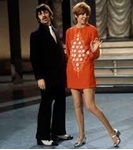
When Cilla Black was building her career in Liverpool as the UK's most iconic songbird, she made a lot of friends along the way. During the 1960s she made quite a name for herself by performing alongside The Beatles in the legendary Cavern Club venue. Through the years, Cilla became very close with the band, particularly Ringo Starr.
In the 2020 documentary, Cilla: The Lost Tapes, further information about the star's private life was revealed.
During this ITV doc, Cilla's private getaways with the Fab Four member were detailed, including their skiing trips in Europe.
Source: Callum Crumlish/express.co.uk
details
Beatles fans are hoping to raise £100,000 for a statue to honour the group’s manager, Brian Epstein.
The Brian Epstein Legacy Project would see a statue of the music entrepreneur created and additional money dedicated to developing a wider legacy in his memory, campaigners say.
Epstein, who discovered The Beatles in the Cavern Club in Liverpool while on a lunchtime visit, also managed Cilla Black Gerry And The Pacemakers, Billy J Kramer & The Dakotas, The Chants, The Scaffold and The Moody Blues.
Sometimes referred to as the “fifth Beatle”, he died in 1967, aged 32.
A campaign for a statue was originally launched in 2019 but put on hold due to the pandemic and organisers have now teamed up with the Iowa Rock ‘n’ Roll Music Association Hall of Fame and Museum
About a third of the original £60,000 target has been raised, thanks to an anonymous donation of £10,000 and other contributions from all over the world, but the group now hope to raise a minimum of £100,000 to honour Epstein’s “energy and vision”.
Source: indy100.com
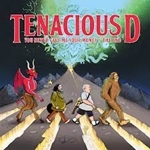
Tenacious D have put their own spin on two of the Beatles’ classic Abbey Road tracks, “You Never Give Me Your Money” and “The End,” for a new seven-inch vinyl release for charity.
Rather than perform the entire Side Two medley from the original Beatles album, the tenacious duo bookend their single with semi-faithful renditions of the two songs, and fill in the gaps with some absurd verses and scatting of their own. As with their previous single, “Time Warp,” the limited-edition vinyl release of the medley will benefit a charity, this time with all proceeds going to Doctors Without Borders.
“Tenacious D are paying tribute to the greatest band in the world…not themselves…the Beatles!!!” Jack Black and Kyle Gass said in a statement. “In the spirit of healing the world….please enjoy Tenacious D’s mashup of two classics from Abbey Road.”
Source: Claire Shaffer/rollingstone.com
details
The original concept of Love, a spectacular theatrical production featuring the reimagined music of the Beatles, came from George Harrison a year before his death in 2001.
At a fete for the Montreal Grand Prix in 2000, Harrison had met Guy Laliberte, a Canadian businessman who shared his love of Formula One racing and also happened to be the cofounder of the contemporary circus company Cirque du Soleil. When Laliberte came to visit Harrison at his English estate Friar Park the next fall, Harrison politely proposed the idea for Love.
"We sat in the garden," Laliberte recalled in the program notes of the show, "and George said, 'Do you think there's anything that you could do with the Beatles' music?' I said that it would have to be a project that we did with the Beatles, and he said, 'I believe it's time for that now.'"
Five years after Harrison's death, his idea would be become a reality. After several years of discussions among the remaining Beatles, Paul McCartney and Ringo Starr, as well as Harrison's widow, Olivia, John Lennon's widow, Yoko Ono, MGM's Mirage and the Beatles' holding company Apple Corps, Love premiered in June 2006 at the Mirage in Las Vegas.
Source: ultimateclassicrock.com
details
Paul McCartney has talked about losing his wife Linda, who was a musician, photographer and animal rights activist.
Linda McCartney died after a battle with breast cancer on April 17, 1998. She was 56 years old.
Speaking ahead of a retrospective exhibition of the photographer’s work in Glasgow, McCartney told the BBC: “Both my mum and Linda died of breast cancer. We had no idea what my mum had died of because no-one talked about it. She just died.”
He continued: “The worse thing about that was everyone was very stoic, everyone kept a stiff upper lip and then one evening you’d hear my dad crying in the next room. It was tragic because we’d never heard him cry. It was a quiet private kind of grief.”
Of his reaction to Linda’s death, the Beatles star said he “cried for about a year, on and off.” “You expect to see them walk in, this person you love, because you are so used to them,” he said. “I cried a lot. It was almost embarrassing except it seemed the only thing to do.”
Source: Rhian Daly/nme.com
